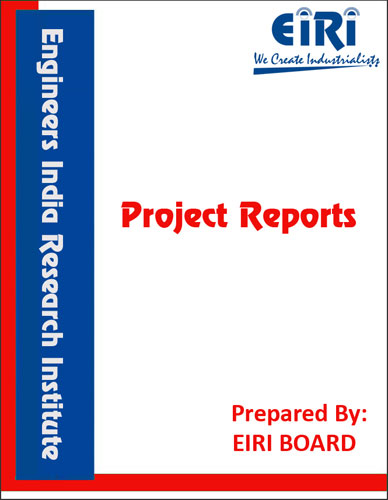GINGER GARLIC PASTE
The project report includes Present Market Position and Expected Future Demand, Market Size, Statistics, Trends, SWOT Analysis and Forecasts. Report provides a comprehensive analysis from industry covering detailed reporting and evaluates the position of the industry by providing insights to the SWOT analysis of the industry.
We can prepare PROJECT REPORT as per your INVESTMENT PLAN for BANK LOAN REQUIREMENT and INDUSTRY ANALYSIS. All reports are prepared by highly qualified consultants and verified by a panel of experts.
Have Query? Click Here to Chat
Industry Expert is Online, Chat with him for more detail.

Garlic & Ginger paste are very versatile products which are used extensively in Food Industries.
Garlic is one of the important species coming into Allium group, whose botanical name is A. Sativum.
A hardy perennial, c60 cm in height, native to Central Asia and cultivated all over India. Bulbs made up of cloves; leaves long, flat, acute, sheahing the lower half of stem; scape slender, smooth, shining, spathes long, beaked, enclosing heads bearing solid bulbils; flowers small, white, prolonged into leafy points.
History and Origin:- Garlic is native to the mountainous regions of central Asia from where it spread in prehistoric times to the maditerranean region. Clay models of garlic have been excavated in Egypt. It reached China at an early age and was probably carried to the western hemisphere by the Spanish, the Portuguese, and the French. It has been suggested that the wild ancestor of garlic was a flowering form producing seeds on aerial bulbils. Under different soil and climatic conditions, and due to different methods of cultivation in the ancient centres of civilization different varieties arose. The non-flowering varieties are thought to have arisen as a result of interference with the natural life cycle caused by storage.
GINGER PASTE
A genus of rhizomatous herbs distributed in the tropics of the old world, chiefly in India, East Asia and Malaysia. Fourteen, species are reported to occur in India Z-officinale, which is the main source of ginger, is cultivated on a large scale in India. Bangladesh, Taiwan, Jamaica, Nigeria and Sieria, Leone, from which it is exported to other countries the world and ginger is cultivated also for internal consumption in Sri Lanka (Ceylon) and several East Asiatic countries and the crop has been introduced into Queens hand in Australia mainly for pickling.
In Hawaii, ginger is marketed as fresh rhizomes which are also shipped to the mainland market. Two types of edible ginger are grown: the large type known locally as “Chinese” ginger and the small type known as “Japanese” ginger. Only the former type is grown to any great extent. Most of the plantings are in small area. Because of the prevalence of certain diseases on the island of Oahu, the ginger-growing areas seem to be shifting to the island of Hawaii, especially in the vicinity of Hilo from where most, if not all, of the ginger for the mainland market is exported.
INTRODUCTION
COMPOSITION OF GINGER
USES AND APPLICATION
B.I.S. SPECIFICATION
MARKET SURVEY
DETAILED EXPORT DATA OF GINGER GARLIC PASTE
PRESENT MANUFACTURING/EXPORTERS OF GINGER GARLIC PASTE
FORMULATION OF GINGER GARLIC PASTE
MANUFACTURING PROCESS OF GINGER GARLIC PASTE
PROCESS FLOW DIAGRAM OF GINGER GARLIC PASTE
MANUFACTURING PROCESS
RAW MATERIAL
FORMULATION OF GARLIC PASTE
PROCESS MANUFACTURING OF GARLIC PASTE PASTE MAKING MACHINE
MANUFACTURING PROCESS IN DETAILS
PROCESS FLOW DIAGRAM FOR GARLIC PASTE
GINGER GARLIC PASTE PACKING MACHINE
RAW MATERIALS CALCULATIONS
FORMULATION
PROCESS FLOW SHEET
PLANT LAYOUT
PRINCIPLES OF PLANT LAYOUT
PLANT LOCATION FACTORS
EXPLANATION OF TERMS USED IN THE PROJECT REPORT
PROJECT IMPLEMENTATION SCHEDULES
GINGER GARLIC PASTE MAKING MACHINES SUPPLIERS
SUPPLIERS OF RAW MATERIALS
APPENDIX – A :
1. COST OF PLANT ECONOMICS
2. LAND & BUILDING
3. PLANT AND MACHINERY
4. FIXED CAPITAL INVESTMENT
5. RAW MATERIAL
6. SALARY AND WAGES
7. UTILITIES AND OVERHEADS
8. TOTAL WORKING CAPITAL
9. COST OF PRODUCTION
10. PROFITABILITY ANALYSIS
11. BREAK EVEN POINT
12. RESOURCES OF FINANCE
13. INTEREST CHART
14. DEPRECIATION CHART
15. CASH FLOW STATEMENT
16. PROJECTED BALANCE SHEET



